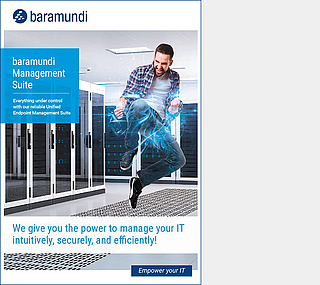Remote Control
Remote control, also referred to as remote monitoring or remote access, describes the process of monitoring, controlling and managing computers or other devices remotely. This process typically takes place via network connections and specialized software solutions.
Resource-efficient and responsive: the benefits of remote control
IT administrators use remote control to solve technical problems efficiently and responsively. This includes, for example, supporting users with more complex problems. The clear advantage is that solving IT problems via remote control conserves resources. IT admins save time and long journeys, as well as possible lengthy explanations over the phone. This means that help can be provided more quickly, and downtimes are significantly reduced.
Remote Control: Keeping an eye on potential risks and challenges
However, challenges also arise. If security is not consistently maintained, it can lead to potential data breaches or unauthorized access. In addition, poor network connections affect the performance of remote-control software. This means that any use of remote control needs to be carefully considered, as any remote access carries potential risks.
The central platform for successful remote control: UEM software
Unified Endpoint Management software plays an essential role in the effective implementation of remote control. As the central platform for managing endpoints, UEM provides the foundation for identifying use cases where remote control is needed in the first place. The UEM solution also helps ensure that only authenticated and authorized IT professionals can perform remote access. It can also establish and monitor policies for remote control activities.
Do you wish to try out the baramundi Management Suite?
Request now!
Product Brochure
Get detailed info about the Management Suite in our product brochure!
